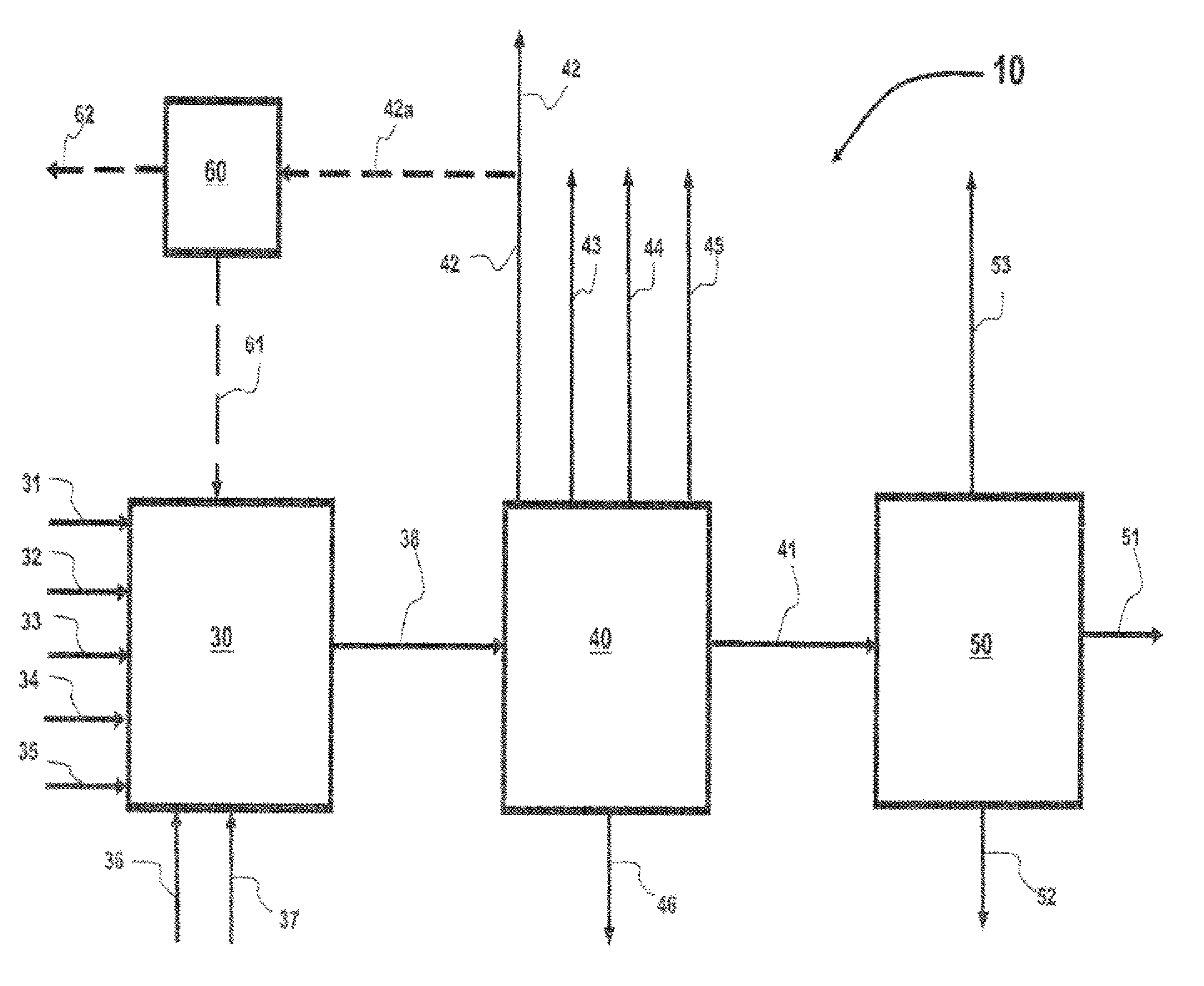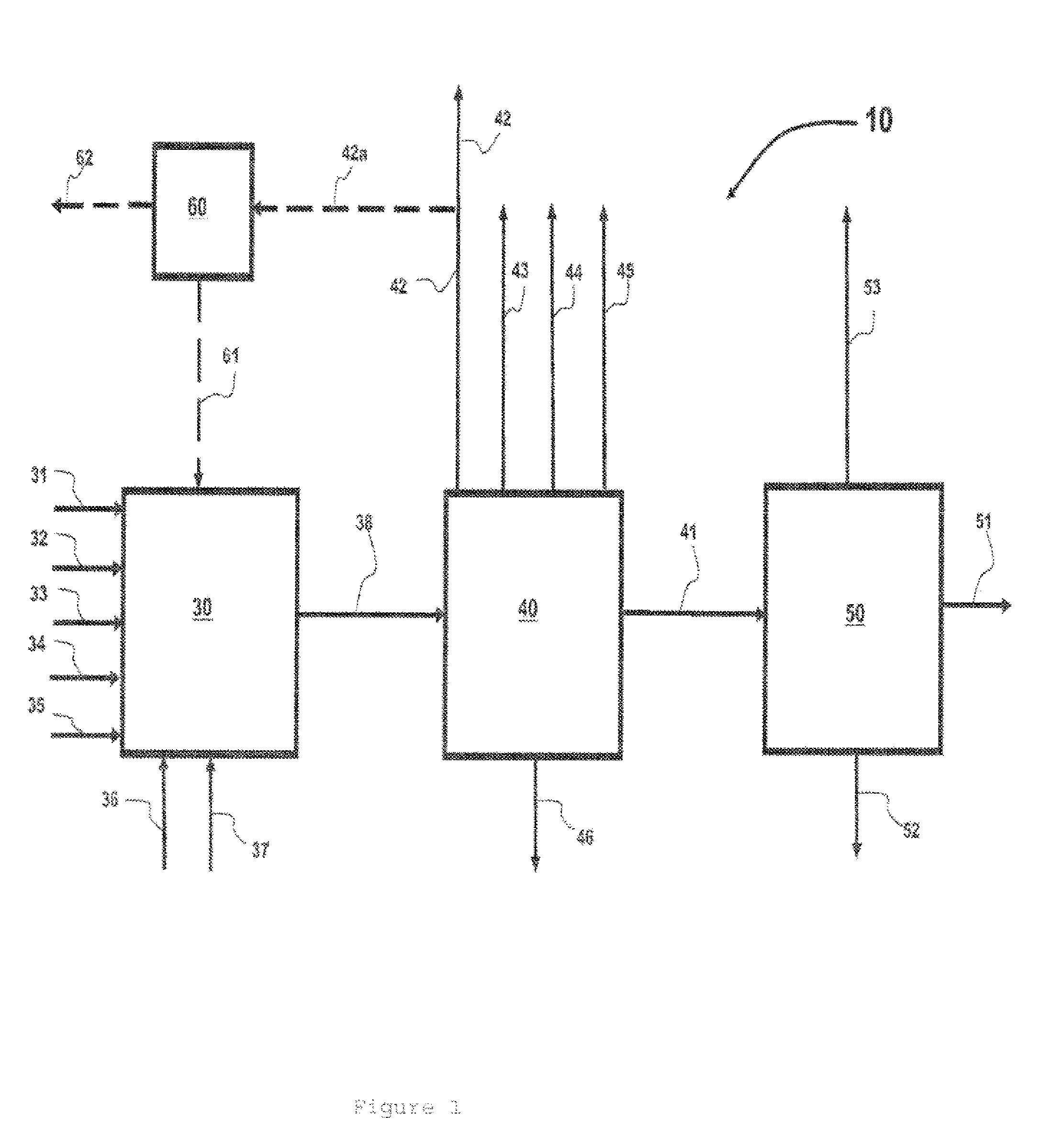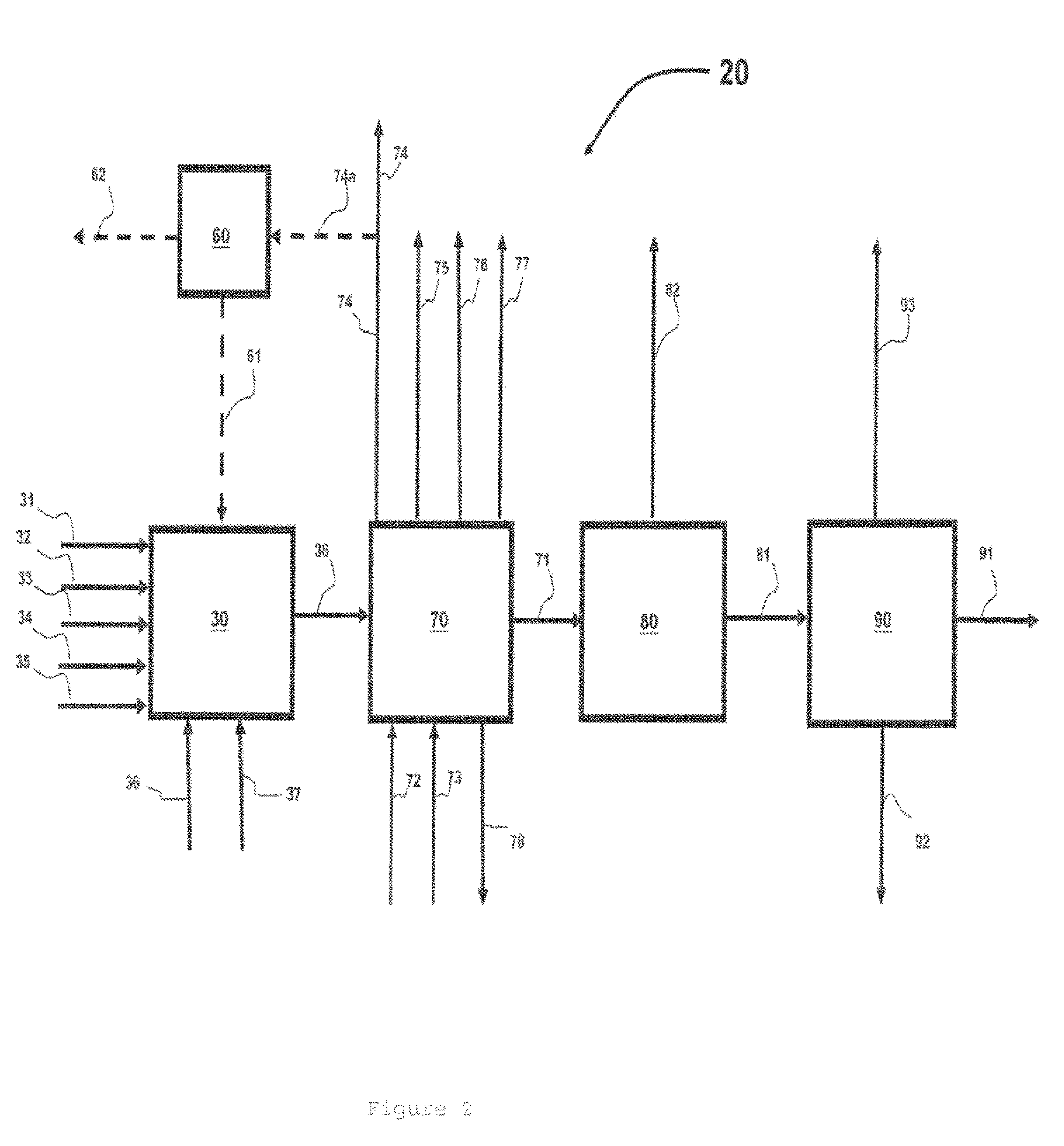Process for preparing divinylarene dioxides
a technology of divinylarene and olefin, applied in the field of divinylarene dioxide preparation, can solve the problems of disadvantaged method used by worzakowska in terms of process safety and economics, and the epoxidation of these two olefins will not give comparable results
- Summary
- Abstract
- Description
- Claims
- Application Information
AI Technical Summary
Benefits of technology
Problems solved by technology
Method used
Image
Examples
example 1
[0238]Divinylbenzene (DVB) used in this Example 1 contained 80% DVB and 20% ethylvinylbenzene (EVB). Into a 1-L 5-neck round bottom flask was charged divinylbenzene (105 g, 0.645 mol DVB, 0.159 mol EVB), acetonitrile (88.1 g, 2.1453 mole), and methanol (210.1 g). The reaction flask was equipped with a Thermoscientific #8272BN pH probe connected to a Fisher Scientific accumet® AR15 pH meter. With vigorous stirring of the mixture, the resulting solution was warmed to 50° C., whereupon simultaneous addition of 51% H2O2 solution (72.1 g, 1.0807 mol) and 1N NaOH solution was begun. The H2O2 was added over a period of two hours while maintaining the reaction temperature at 50° C. and adding NaOH solution at a rate sufficient to maintain the pH at 11.0±0.2. After completion of the peroxide feed the mixture contained 0.72 wt % peroxide. The mixture was digested an additional 3 hours at 50° C. and pH 10.0-11.0 at which time the peroxide was 0.06 wt %. The mixture was diluted with 500 mL of w...
example 2
[0239]Using the procedure described in Example 1, DVB (80.0 g, 0.4916 mole DVB, 0.1212 EVB), acetonitrile (95.85 g, 2.335 mole), and 51% H2O2 (77.86 g, 1.1675 mole) were reacted in methanol solvent (240 g) with pH controlled at 11.0±0.2 by addition of 1N NaOH. The unreacted DVB was 1.0% of the initial DVB charged. The DVBDO yield was 65% and the DVBMO yield was 19% based on DVB charged. The total yield of epoxide groups (summed for all three products EVBO, DVBMO, and DVBDO) was 71% based on H2O2 charged.
example 3
[0240]Using the procedure described in Example 1, DVB (67.0 g, 0.4117 mole DVB, 0.1015 mole EVB), acetonitrile (98.72 g, 2.4044 mole), and 51% H2O2 (80.19 g, 1.2022 mole) were reacted in methanol solvent (234.5 g) with pH controlled at 11.0±0.2 by addition of 1N NaOH. The unreacted DVB was 0.1% of the initial DVB charge. The DVBDO yield was 78% and the DVBMO yield was 7% based on DVB charged. The total yield of epoxide groups (summed for all three products EVBO, DVBMO, and DVBDO) was 63% based on H2O2 charged.
PUM
| Property | Measurement | Unit |
|---|---|---|
| pH | aaaaa | aaaaa |
| temperature | aaaaa | aaaaa |
| weight ratio | aaaaa | aaaaa |
Abstract
Description
Claims
Application Information
 Login to View More
Login to View More - R&D
- Intellectual Property
- Life Sciences
- Materials
- Tech Scout
- Unparalleled Data Quality
- Higher Quality Content
- 60% Fewer Hallucinations
Browse by: Latest US Patents, China's latest patents, Technical Efficacy Thesaurus, Application Domain, Technology Topic, Popular Technical Reports.
© 2025 PatSnap. All rights reserved.Legal|Privacy policy|Modern Slavery Act Transparency Statement|Sitemap|About US| Contact US: help@patsnap.com



